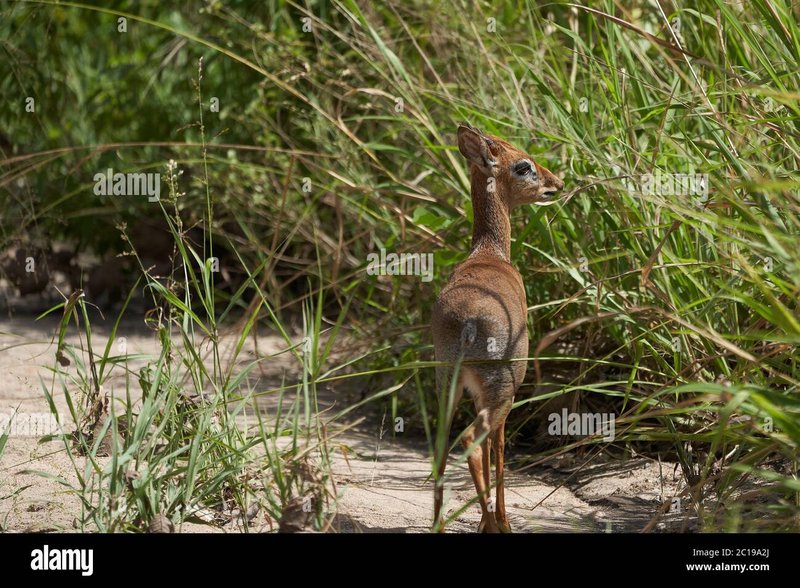
Dik-diks are more than just cute faces; they’re fascinating animals with unique habits and behaviors. Just like a good book, there’s much to discover if you take the time to observe them. So, whether you’re on a safari in Kenya or trekking through the savannas of Tanzania, knowing how to interact with dik-diks can make your encounter memorable and enjoyable. Here’s everything you need to know about meeting a dik-dik in the wild.
Understanding the Dik-Dik
Before you even set foot out in the wild, it’s helpful to have a grasp of who the dik-dik is. These pint-sized antelopes stand only about 12 to 16 inches tall at the shoulder and weigh around 10 to 15 pounds. Picture a small dog with legs a bit longer and a more slender body. Their name comes from the sound they make when they’re startled, which sounds like “dik-dik.”
Dik-diks are shy and prefer to stay hidden, usually blending in with their surroundings. They thrive in bushy habitats where they can find plenty of food—mostly leaves, fruits, and berries. Here’s the thing: they’re more active in the early morning or late evening, which means you’re most likely to encounter them during those twilight hours.
Now, you might be wondering why this matters. Understanding the dik-dik’s habits helps you know when to look and what to watch for. When they feel safe, they might venture out for a snack, giving you a chance to observe their adorable behavior.
How to Approach a Dik-Dik
If you spot a dik-dik in the wild, the first instinct might be to rush over and snap a few photos. Hold your horses! The most important rule of encountering wildlife is to maintain a respectful distance.
Start by standing still and observing quietly. Dik-diks are skittish creatures and easily spooked by sudden movement and loud noises. A gentle approach goes a long way in ensuring a peaceful interaction. Most importantly, keep an eye on their body language. If you notice them becoming tense or looking ready to bolt, it’s best to take a step back.
Here’s a tip: when you move, do so slowly and deliberately. Think of it like entering a friend’s house—you wouldn’t barge in without knocking! A calm presence not only allows you to enjoy the moment but also keeps the dik-dik from feeling threatened.
What to Do If a Dik-Dik Looks Confrontational
Encountering a dik-dik can be enchanting, but sometimes they may show signs of aggression. This is rare, but if a dik-dik feels cornered, it might stomp its feet or make alarming vocalizations.
So, what should you do? Take a deep breath and give it space. Step back and remove any pressure from the situation. If you find yourself too close, slowly retreat while still facing the dik-dik. This action shows that you’re not a threat.
A quick side note: dik-diks are known to be monogamous, often staying with one partner for life. If you see one hanging out with another, they might be trying to protect each other. Keep this in mind; avoiding confrontation is key to a peaceful encounter.
Understanding the Environment
Many factors contribute to where you might find dik-diks. They favor bushy areas with plenty of cover. Knowing their preferred habitats can enhance your chances of spotting them.
When planning your outing, consider exploring regions in eastern and southern Africa, particularly in parks and reserves known for their wildlife diversity. Some popular spots include the Maasai Mara in Kenya and Serengeti National Park in Tanzania. These places are not only rich in wildlife but also offer breathtaking landscapes.
If you’re hiking or driving through their territory, take a moment to observe your surroundings. Look for signs of dik-diks, like small grazing patterns or broken branches from browsing. The more you know about their habitat, the better prepared you’ll be for a delightful encounter.
How to Photograph a Dik-Dik Responsibly
Capturing that perfect shot of a dik-dik can be tempting, but remember to prioritize its comfort. If you’re a photography enthusiast, keep these tips in mind:
- Use a Zoom Lens: A zoom lens helps you capture close-ups without invading their space.
- Avoid Flash: Flash photography can startle animals; natural light is your best friend.
- Stay Stealthy: Camouflage clothing can help you blend in, making it easier for dik-diks to feel at ease around you.
Honestly, the best photos often come from patience and quiet observation. Spend time watching their behavior rather than seeking a quick snapshot. You might find yourself engrossed in their world, and that, in itself, is a rewarding experience.
Respecting Wildlife and Conservation
Encounters with dik-diks highlight a broader responsibility we all share—the need to protect wildlife and their habitats. It’s not just about observing these majestic creatures; it’s also about respecting their environment.
When planning your trip or participating in safari activities, choose eco-friendly options that support local conservation efforts. Many organizations work tirelessly to protect wildlife and their habitats. Supporting these initiatives not only contributes to the safety of animals like dik-diks but also helps sustain local communities that depend on these ecosystems.
Here’s the thing: our actions matter. Whether you’re photographing animals or simply enjoying their presence, always consider how to minimize your impact. Leave no trace, and encourage others to do the same.
Encountering a dik-dik in the wild can be a delightful experience, offering a glimpse into the rich tapestry of nature. By understanding these tiny antelopes and their behaviors, you can appreciate them from a safe distance while ensuring their safety too. Remember to approach wildlife with respect, patience, and a sense of wonder.
So, next time you find yourself in dik-dik territory, take a moment to soak it all in. With the right mindset, you’ll not only have a great story to tell but also contribute to the well-being of these remarkable creatures. Happy exploring!

